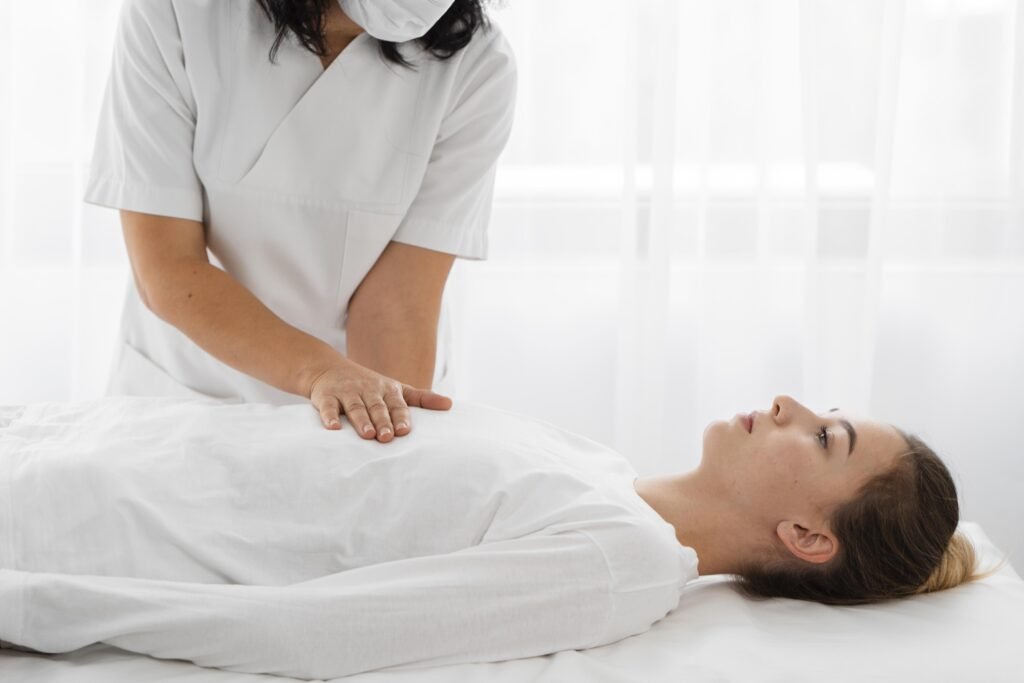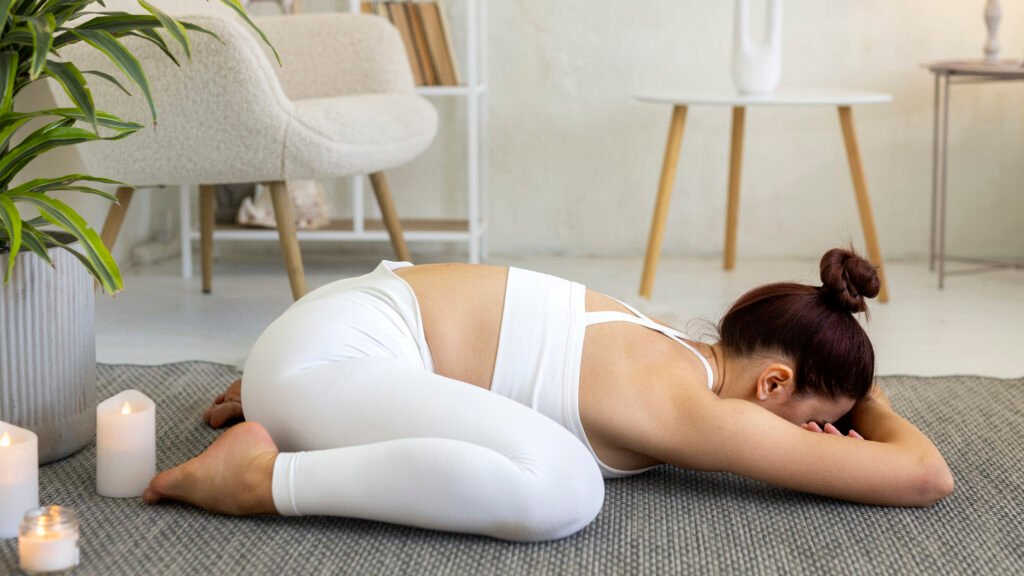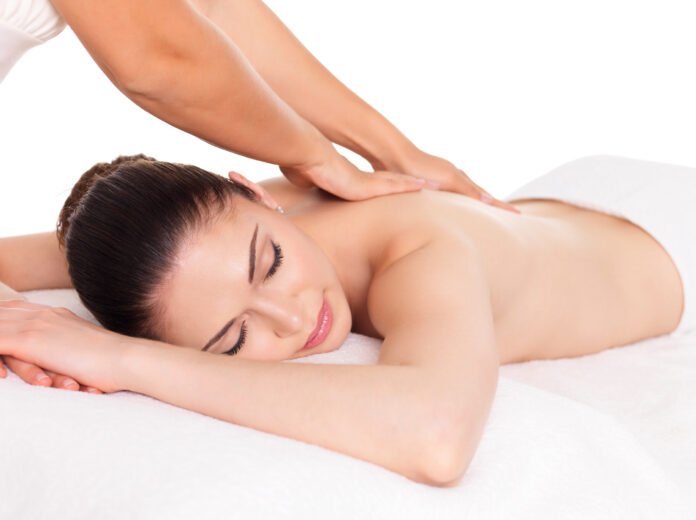Massage therapy isn’t just a feel-good indulgence; it’s a powerful tool for combating stress and promoting deep relaxation. We all know the toll that stress can take on our physical and mental well-being, leaving us drained, tense, and anxious. But what if there was a natural way to unwind, ease muscle tension, and melt away worries? This is where massage therapy comes in.
What is massage therapy?
Massage therapy is the practice of manipulating the body’s soft tissues, including muscles, connective tissues, tendons, and ligaments. This manipulation is achieved through techniques like kneading, stroking, pressing, and even vibration. A skilled massage therapist will tailor their approach to your specific needs, focusing on areas of tension or discomfort to promote relaxation, improve circulation, and reduce pain. Massage therapy can be a gentle and effective way to address a variety of concerns, from everyday stress to chronic pain conditions.
Types of massage therapy
1. Swedish massage
In massage therapy, Swedish massage reigns supreme as the most popular technique. This classic massage employs a combination of gentle strokes, kneading, and tapping to relax muscles, improve circulation, and boost your overall well-being. It’s a perfect choice for those seeking a stress-relieving and rejuvenating experience.

2. Deep tissue massage
Deep tissue massage therapy takes things a step further than its Swedish counterpart. This targeted massage therapy applies deeper pressure to release chronic muscle tension and knots. It’s ideal for athletes, those with physically demanding jobs, or anyone experiencing persistent pain. While it can be slightly more intense, a deep tissue massage can leave you feeling invigorated and significantly more mobile.

3. Sports massage
Designed specifically for athletes and fitness enthusiasts, sports massage therapy goes beyond relaxation. This specialized massage therapy technique utilizes a combination of strokes, pressure, and stretching to enhance athletic performance, prevent injuries, and aid in recovery after workouts or competitions. Sports massage therapists often target specific muscle groups used in your chosen sport, helping to improve flexibility and range of motion and reduce muscle soreness.

4. Trigger point massage
Trigger point massage therapy focuses on those tiny but tender knots that can develop in your muscles. These “trigger points” can radiate pain to other areas and cause discomfort. By applying direct pressure and specific techniques to these trigger points, trigger point massage therapy aims to release the tension and alleviate the pain it causes. It’s a targeted approach that can be highly effective in managing pain and improving your range of motion.

5. Myofascial release
While not technically massage therapy in the traditional sense, myofascial release is often used with massage to target the fascia. This connective tissue surrounds your muscles. This gentle, sustained pressure aims to elongate fascial adhesions, those tight and restricted areas that can contribute to pain and limit movement. By incorporating myofascial release into your massage session, you can experience a more profound release of tension, improved flexibility, and enhanced range of motion.

6. Lymphatic massage
Lymphatic massage therapy is a gentle form of massage that focuses explicitly on the lymphatic system, a network of vessels that helps drain waste and toxins from your body. Unlike traditional massage techniques focused on deep muscle manipulation, lymphatic massage uses light strokes and rhythmic movements to encourage the flow of lymph fluid. This can be beneficial for reducing swelling, improving circulation, and even boosting the immune system. If you’re looking for a massage therapy approach that promotes detoxification and overall well-being, lymphatic massage might be an excellent option.

7. Prenatal massage
As your body undergoes the incredible pregnancy journey, prenatal massage therapy can be an excellent companion. This specialized massage technique is tailored to address the unique needs of expecting mothers. Prenatal massage therapists use modified positions and gentler pressure to target common discomforts like back pain, leg cramps, and swelling. It can also promote relaxation, improve sleep, and even reduce stress and anxiety—all contributing to a more comfortable pregnancy experience.

Health benefits of massage
While almost anyone can enjoy massage therapy, it’s particularly beneficial for those managing conditions like cancer, heart disease, digestive issues, and fibromyalgia. However, it’s essential to communicate any health concerns to your massage therapist before your first session to ensure a safe and effective treatment plan. Here are some of the many benefits massage therapy can offer.
- Reduces stress and anxiety
Studies have shown that the tranquility you experience following a massage can translate to reducing stress and anxiety. Our bodies have two central nervous systems: the sympathetic nervous system, which kicks in our “fight-or-flight” response during stressful situations, and the parasympathetic nervous system, which is responsible for relaxation and routine functions. Massage therapy is believed to stimulate the parasympathetic response, leading to a decrease in anxiety.
- Improves sleep
Beyond relaxation, massage therapy offers a biochemical shift that combats stress and improves mood. Studies have shown it can decrease cortisol, the stress hormone, while boosting serotonin and dopamine, which are neurotransmitters that promote emotional well-being. This hormonal dance is why massage therapy can be helpful for those struggling with insomnia related to menopause and congestive heart failure.
- It lessens pain and muscle tension.
Multiple studies have investigated the effectiveness of massage therapy in reducing pain, including acute back pain, neck pain, headaches, and knee pain. The findings suggest that massage may provide short-term, rather than long-term, pain relief. Interestingly, research shows that receiving a 60-minute massage multiple times weekly may yield better results than fewer or shorter massage sessions.
- Improves immune function
While massage is often lauded for its relaxation benefits, research suggests it also boosts your immune system. A study found that regular massage sessions increased the production of white blood cells, the body’s soldiers, in the fight against viruses and infections. This exciting finding adds another layer to the potential health benefits of massage therapy.
- Relieves constipation
While massage therapy is generally known for its relaxation and stress-reduction properties, evidence suggests it can be helpful after surgery. One study showed that abdominal massage techniques effectively promoted bowel movements for patients experiencing constipation following surgery. This highlights the potential of massage therapy to address a broader range of concerns beyond muscle tension and stress.
- Lessons fibromyalgia symptoms
The benefits of massage therapy extend beyond relaxation and stress relief. Research suggests it can even improve symptoms of fibromyalgia, a chronic condition characterized by widespread muscle and joint pain, fatigue, and sleep disturbances. Studies have shown that massage therapy used consistently over five weeks may lead to improvements in sleep, memory, and mood in individuals with fibromyalgia.
- Relieves cancer pain
Cancer treatment can take a significant physical and emotional toll. Many patients seek massage therapy to manage pain, promote relaxation, and improve their overall quality of life. The research on massage and cancer pain is mixed, with some studies showing no improvement and others demonstrating positive effects. It’s important to discuss massage therapy with your doctor to determine if it’s a safe and appropriate complement to your cancer treatment plan.
Who should try massage therapy?
Massage therapy offers many benefits, making it an excellent option for almost anyone! Whether seeking stress relief, managing a chronic condition, or simply looking to improve your overall well-being, massage therapy can be a valuable tool. However, it’s always wise to consult with your doctor before your first session to ensure it’s safe for you.


